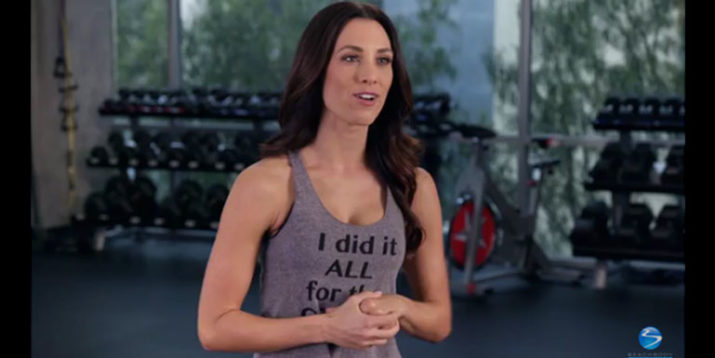Take the Autumn Calabrese Squat Challenge!

Do you want to know the secret to a perfect squat? Sure you do.
The squat is the king of lower body exercises for a reason: No other move hits more muscle below your waist.
But here’s the thing — most people do it wrong, and thus never realize its full muscle-building, body-slimming potential.
That ends today.
Super Trainer Autumn Calabrese can teach you to perform a squat perfectly every time, but also be able to use the squat challenge to give yourself a total-body fitness test.
“If you know me, you know I love working legs,” says Autumn. “Squats are one of my all-time favorite exercises. It works the entire lower body.
“You even get some core work in by holding those abs in tight to protect your lower back.”
Autumn also emphasizes that squats are an important part of your workout routine.
So let’s go.
How to Do a Classic Squat
To start, stand tall with your hands by your sides and your feet shoulder-width apart. Your toes should point forward.
Keeping your back flat (not rounded nor excessively arched), push your hips back and bend your knees as you lower your body.
When you hear people talk about the all-important “hip hinge,” that’s it.
You want to “sit” into the exercise, pushing your butt back like you’re lowering yourself into a chair or onto a bench.
Never bend forward at your waist. That will only increase the stress on your spine and throw you off balance.
“Remember to hold those abdominals in tight,” reminds the detail-oriented Autumn.
Lower yourself until your thighs are at least parallel to the floor, keeping your weight on your heels and your gaze focused on a spot several feet ahead of you on the floor (not straight ahead).
This will keep your entire spine in alignment as you do the squat.
“Pause, and then drive through your heels as you explode back up to the starting position,” says Autumn. “Squeeze your glutes at the top.”
The squat hits several of your body’s biggest muscles, including your quads and glutes, and that final explosive movement will help maximize muscle fiber recruitment in them.
If you find the classic squat too difficult, don’t drop as low—start with a half-squat, and work your way down to a full squat as your mobility and strength improve.
Already fit and able to tackle the full range of motion and perfect form?
Then kick it up a notch by adding a jump, an isometric hold, or both.
How to Do the Squat Challenge
Drop down into a classic squat, and hold the bottom position for one second, then do one explosive jump.
“Make sure you’re landing nice and soft every time you jump,” says Autumn.
When you land, immediately drop down into a squat position again. Hold it for two seconds, and then do two explosive jumps.
Continue adding one second to your hold and one jump until you reach “technical failure,” meaning your form breaks down.
If your knees start to cave in, if your stability falters, or if your range of motion starts to dwindle, you’re done.
That pause at the bottom makes the challenge harder, not easier.
Instead of resting your muscles, you’re increasing the time they’re under tension. You’re also eliminating any help you’d get from the “stretch reflex,” which is the momentary, rubber band-like tendency of your muscles to spring back to a shortened state when they’re stretched.
The result: your quads and glutes are going to have to do more work on the way back up.
This is an incredibly tough exercise, and a true test of fitness.
“All I ask is that you get a little better every time you do it,” says Autumn.
